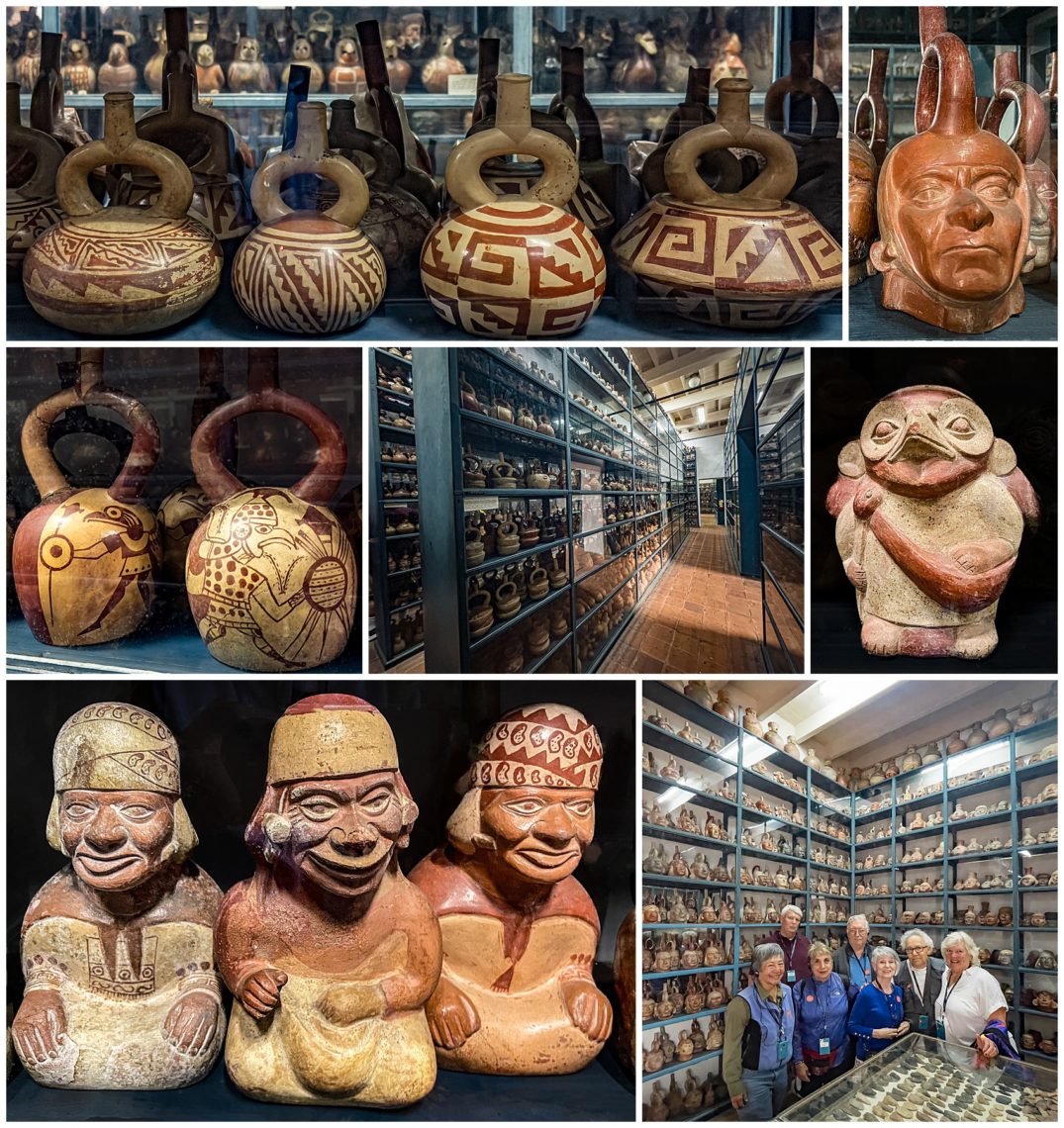
We also visited other museums in Lima. One of the largest is the Larco Museum, which has been on every list of “must see” attractions in Lima, displaying one of the largest collections of pre-Colombian artifacts. Lorena had gone earlier on her own, and said there was no reason to take any photographs this time. We linked up with a museum guide for our group of 7 (lower-right). The first place she took was the Storage Room for the museum. After Lorena recovered from her shock that she totally missed this room on her first visit, her camera came out! ☺
The title of the room was “Storage Room,” so it would be easy to pass by. However, the museum has over 40,000 ceramic pieces and over 5000 gold pieces in inventory. Of those 45,000 pieces, 30,000 are found here in the Storage Room, which is open for the public to browse. All the images above were taken in that room. Without a guide to tell you what you are looking at, you can only appreciate the craftsmanship from thousands of years ago. A guide helps bring it alive by telling more about what you are really seeing, and how it related to the lives of those who made the pieces.
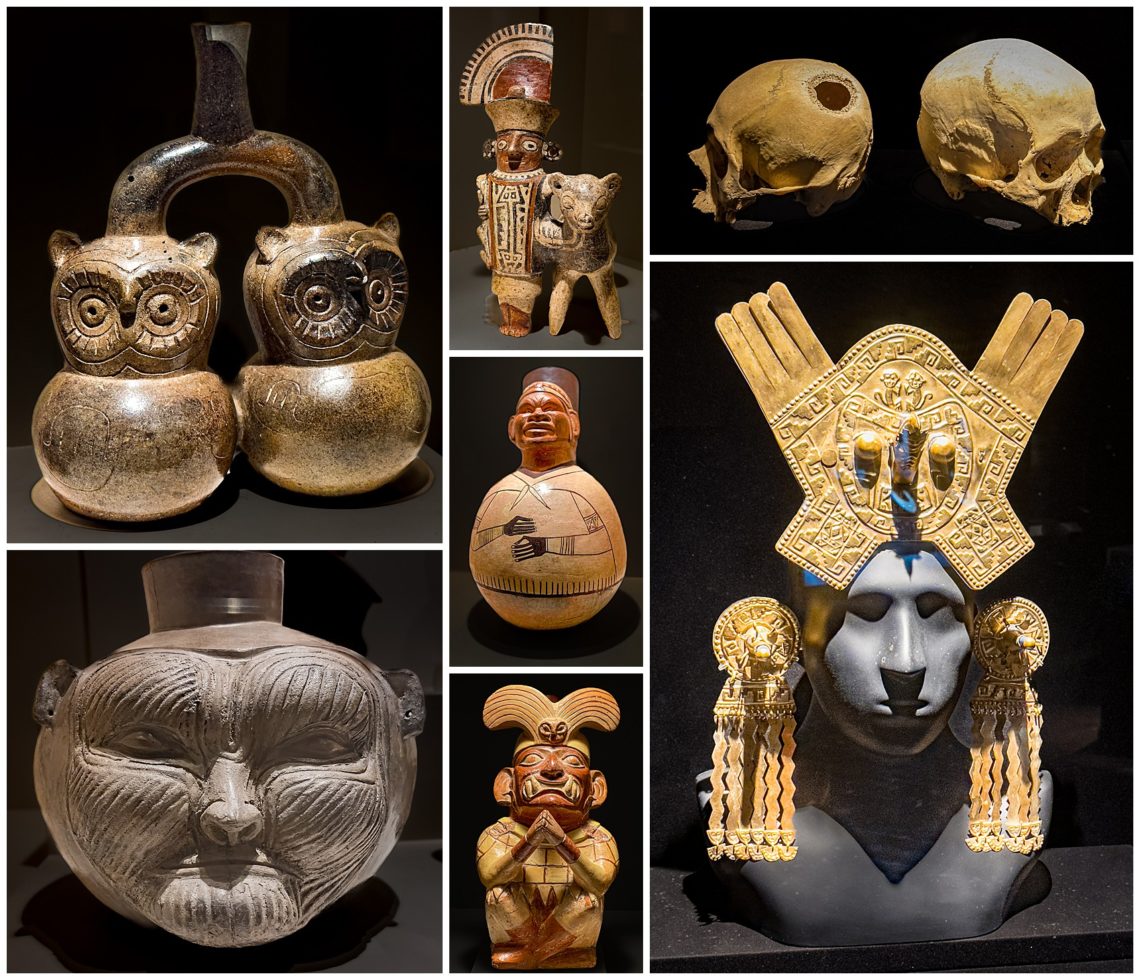
The main portion of the museum is divided into four rooms, each of which shows artifacts from throughout history within a specific region. In one room are a series of skulls with holes in them (upper-right), that are the result of the earliest experiments in brain surgery, to relieve various ailments (real or supernatural). As our guide pointed out, most of these patients died, but some did survive, as evidenced by healing around the hole that had been opened in the skull.
Many of the gold ornaments were in nearly pristine condition, despite being very thin and fragile (lower-right). We were told the reason was that the masks and ornaments were retrieved from burial tombs. These golden artifacts were never meant to be worn during the life of the person. Rather, they were made for him, so that he would arrive in Heaven in a manner suitable for presentation to their God.
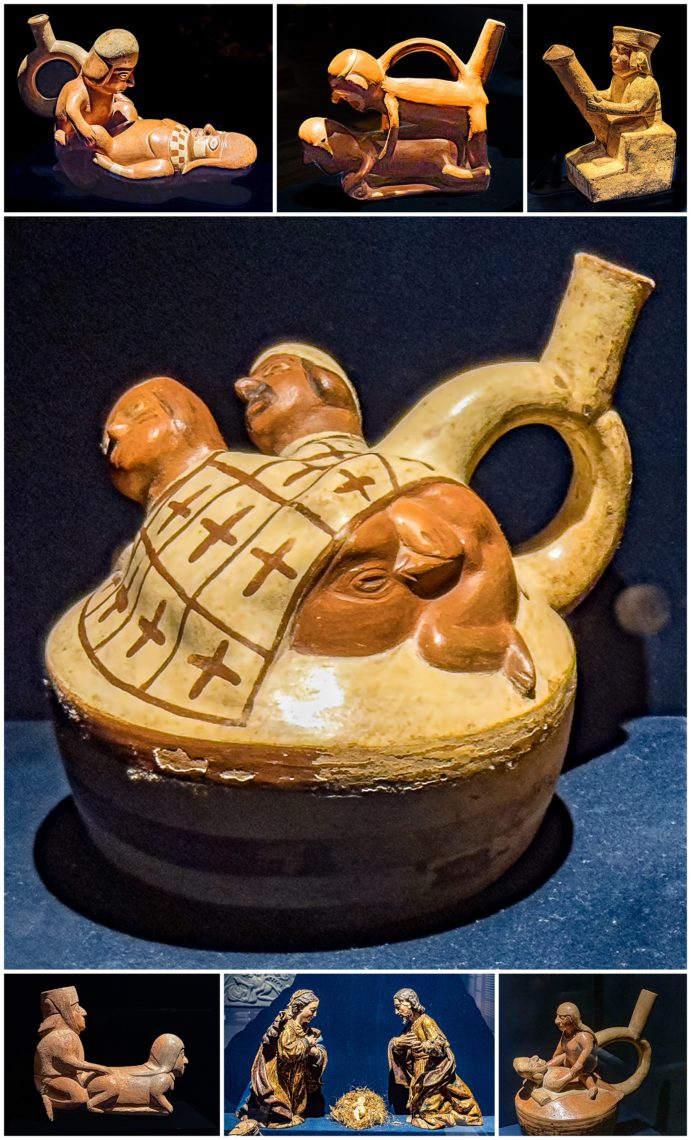
Beyond the four main rooms for tourists to roam, there was one additional room that was locked up, and required proof of age to enter… The Erotica Collection. Yep, an entire room of erotic ceramics collected from several thousands of years. It was clear that sex was high on their minds as far back as pottery could be made…
Towards the end of the room, near the end of the collection, was a set of three pieces that rather baffled me as to why they were in this room. I never received an adequate answer, but there were two paintings and one ceramic set depicting the birth of Jesus (bottom-center). In a deeply Catholic country such as Peru, I never quite figured out why those pieces were considered erotic, and available only to adults?
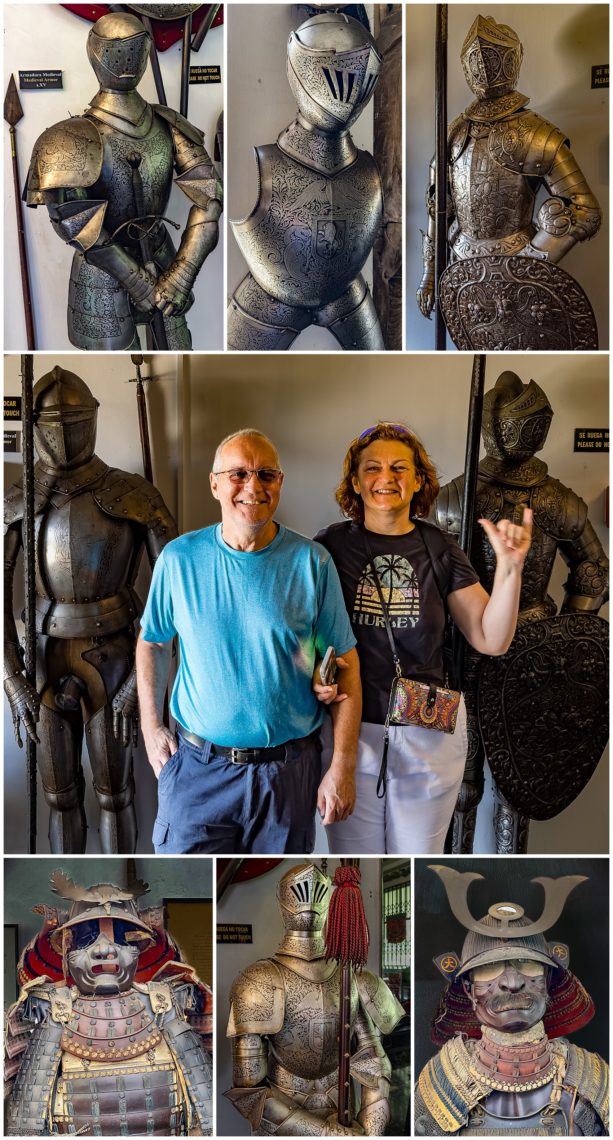
The last major museum we visited was the Museo Oro del Peru, translated as “Gold Museum of Peru.” We were surprised when we entered the museum and saw numerous suits of armor spanning hundreds of years, covering many military countries. Alla and Michael decided this was an ideal place to be photographed (center), since he much preferred the suits of armor over gold trinkets anyway!

The next room continued the war theme, with a huge display of weapons. There were samurai swords from Japan (upper-left). There were also several guns owned by past presidents of Peru (center and top-center). Unfortunately, most of the other military displays (bottom row) were just dozens and sometimes hundreds of items crammed into a display case with no indication of what anything was, other than the century it came from.
It wasn’t until we returned from that tour, that we discovered the proper full title of the museum is “Museo Oro del Perú y Armas del Mundo,” or “Museum of Gold of Peru and Arms of the World.” Oddly, the signs outside said nothing about the “Arms of the World” portion, though most online references do include that element.
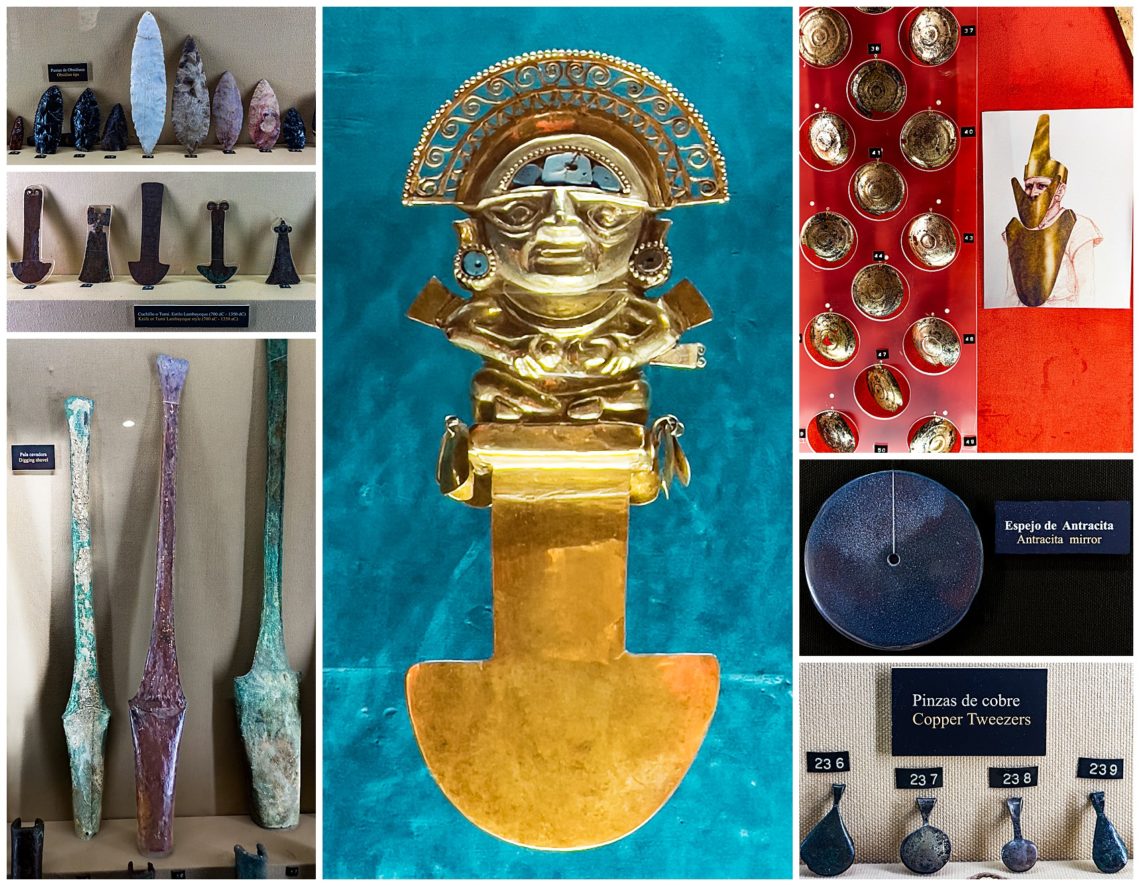
When we moved downstairs, the gold collection was showcased, along with many other historic artifacts dating back thousands of years. There was an entire display case devoted to copper tweezers (bottom-right shows a small portion). There was another case devoted to early mirrors (right-center), which were basically polished obsidian on a string to be carried around. Early shovels were shown (lower-left), and arrowheads dating back thousands of years (upper-left). This section mostly showcased ritual knives used in performing human sacrifice. There were several dozen early metal ones (left-middle), and then some elaborate gold versions dating back to roughly 1000 years ago (center).
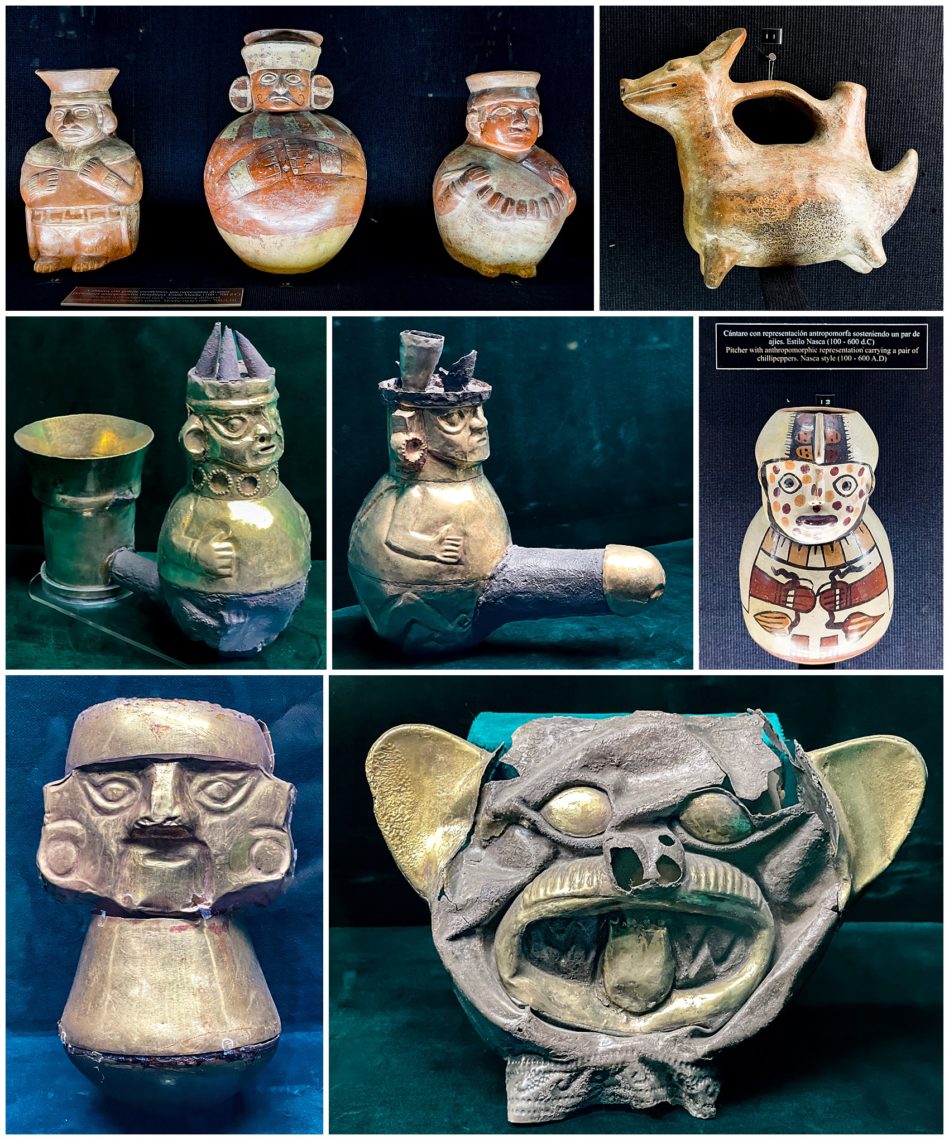
There was an entire room full of ceramics. The displays in this section were much better than upstairs, in that each piece, or small group of pieces, had an explanatory plaque that went with them. The erotic ceramics in this museum were simply mixed in with the other pieces (center).
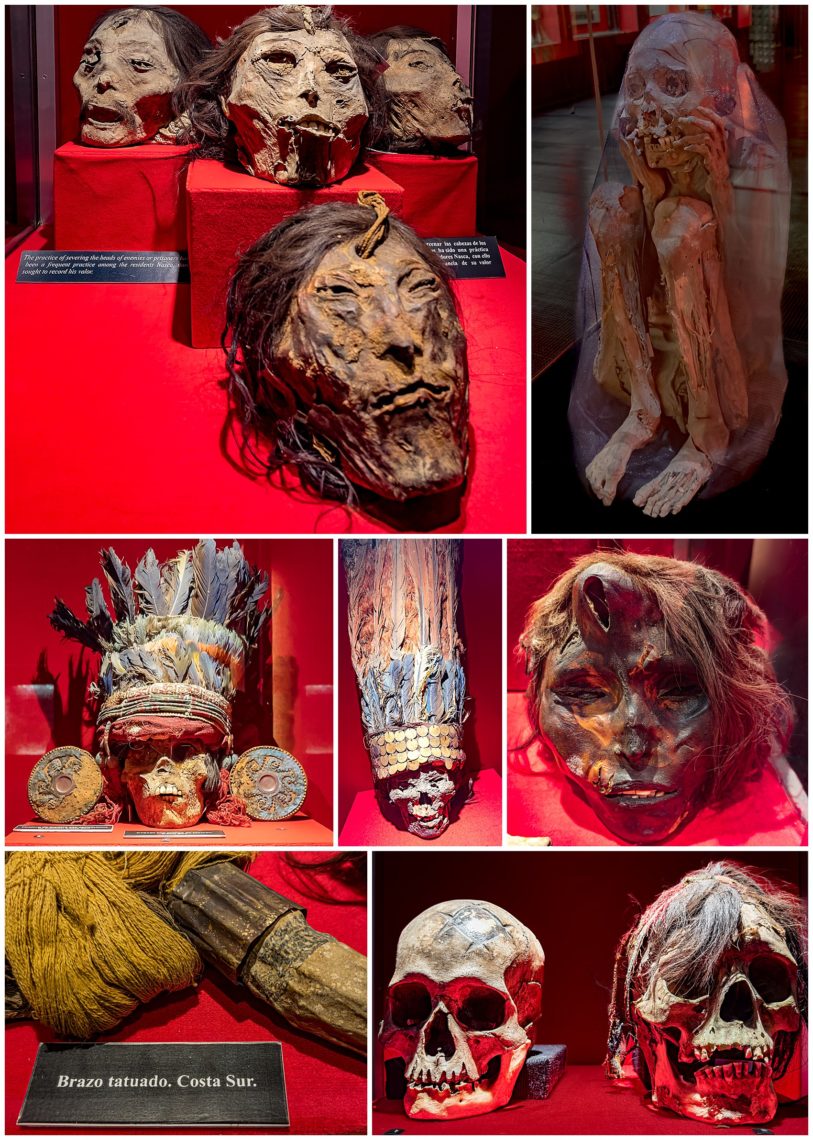
Scattered throughout this area were also displays of skulls, frequently with the ornamentation they were buried with. Two full mummified people were displayed, curled in a fetal position (upper-right). There were also a couple of examples of early tattoos (“Brazo tatuado”), as seen lower-left.
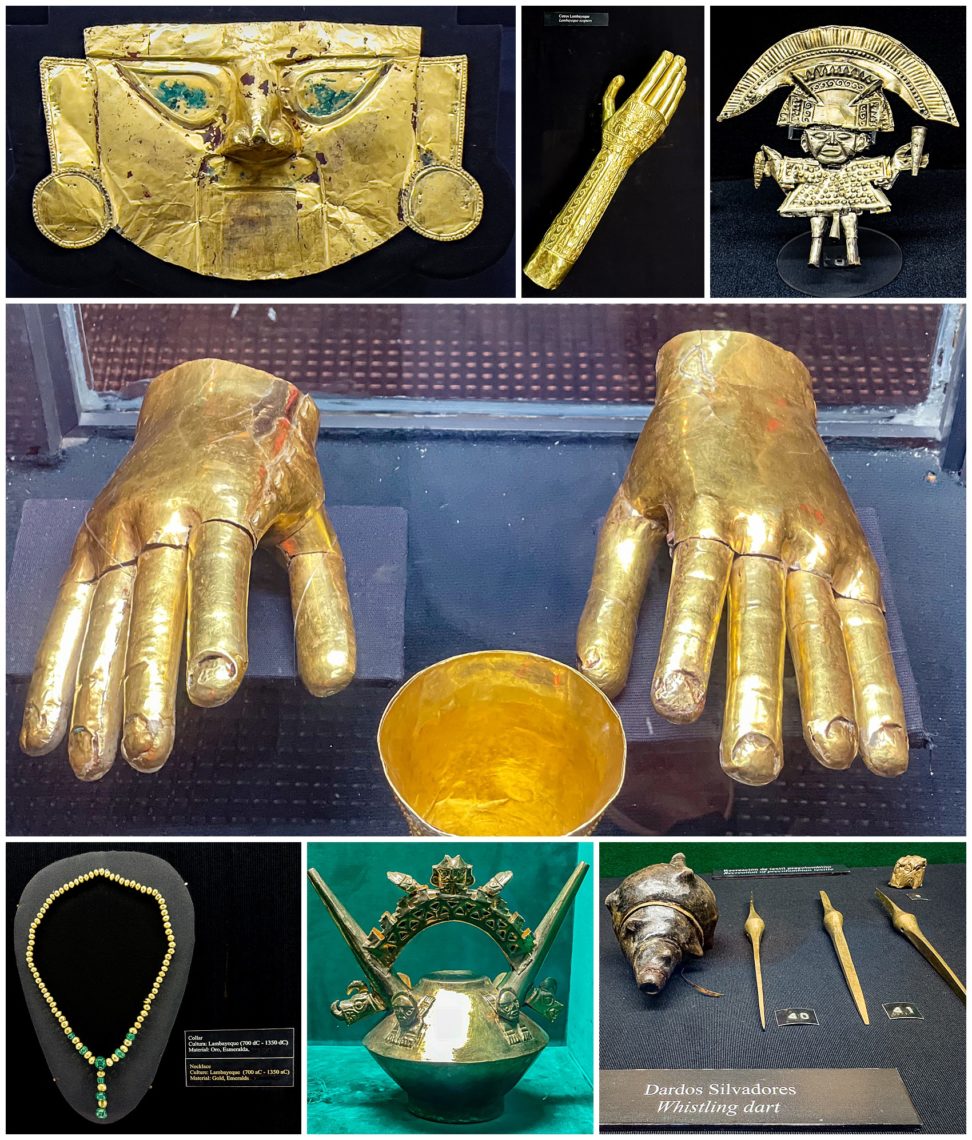
And then, of course, were three large rooms full of gold artifacts. As in the Larco museum, these pieces are mostly in pristine condition, because they were taken from burial sites. The gold ornamentation was never meant to be worn in life, but was instead created specifically for the burial rites, and placed on the bodies, so that the deceased would be recognized for their status in the prior world.